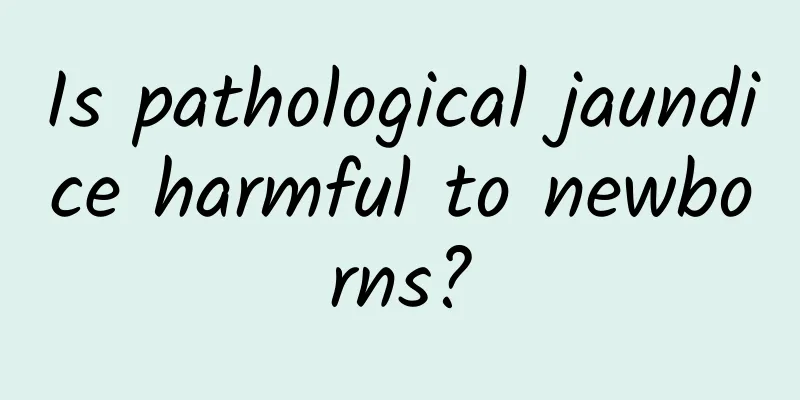Is pathological jaundice harmful to newborns?

|
The harm of pathological jaundice to newborns cannot be ignored. It may lead to serious consequences such as nerve damage and even cerebral palsy. We should understand its causes, including genetic factors, maternal and fetal blood type incompatibility, infection, etc., and take timely and effective treatment and intervention measures, such as exchange transfusion therapy and phototherapy. 1. Genetic factors: Certain genetic diseases may cause neonatal jaundice, such as hereditary spherocytosis. Such conditions can usually be detected through special tests, and targeted treatment measures should be taken according to the specific situation. 2. Environmental factors and maternal-infant blood type incompatibility: There may be blood type incompatibility between the mother and the newborn, such as ABO blood type incompatibility or Rh blood type incompatibility, which leads to the destruction of red blood cells and the production of large amounts of bilirubin, causing jaundice. Prenatal examinations can be used to identify risks in advance and early monitoring and intervention can be carried out after birth. 3. Physiological factors: The liver function of the newborn is not fully developed and is temporarily unable to properly handle excessive bilirubin. This is the cause of physiological jaundice, but in some cases, such as abnormal liver function, the situation may deteriorate into pathological jaundice, which requires close monitoring and possible drug or surgical intervention. 4. Trauma or infection: Minor trauma or infection during birth can aggravate the severity of jaundice, and early anti-infection treatment or other symptomatic treatment is required. 5. Pathological treatment methods: For newborns diagnosed with pathological jaundice, commonly used treatment methods include phototherapy, which accelerates the decomposition of bilirubin through special light irradiation; exchange transfusion therapy to reduce bilirubin levels by replacing part of the newborn's blood; oral or injectable drugs to help excrete bilirubin from the body. Timely identification and treatment of pathological jaundice is crucial to avoid serious harm to newborns. Parents need to pay close attention to the condition of their newborns. If jaundice worsens or other abnormal symptoms occur, they should seek medical attention in time. Taking appropriate intervention measures under the guidance of medical staff can greatly reduce possible risks and complications. |
<<: Is hand, foot and mouth disease in children highly contagious?
>>: How long does it take for a child to get out of bed after hernia surgery?
Recommend
What should I do if my newborn has severe jaundice?
What should I do if my newborn has severe jaundic...
What to do with acute mumps in children
Acute parotitis in children first needs to be dia...
Can babies with hand, foot and mouth disease eat loquat? What are the dietary precautions for hand, foot and mouth disease?
Ripe loquats are sweet and nutritious, with vario...
Common causes and care of diarrhea in children
Common causes of diarrhea in children include col...
How to regulate diet for acute laryngitis in children
How to properly regulate the diet for children wi...
What is the cause of dry cough in babies? Common causes of dry cough in babies
Infants usually have dry coughs during the day, a...
What medicine is effective for neonatal jaundice?
Neonatal jaundice usually requires targeted treat...
Can polio be cured?
Poliomyelitis is commonly known as poliomyelitis....
Two ways to provide good care for children. What are the causes of pathological jaundice?
Neonatal jaundice refers to a disease characteriz...
How to diagnose hernia in children
How is hernia diagnosed in children? 1. An oval m...
What measures can be taken to prevent diarrhea in children
Pediatric diarrhea is a very common disease that ...
What examinations should be done before pediatric hernia surgery? What are the manifestations and symptoms of pediatric hernia?
Many parents do not know that they need to underg...
Can Rhizoma Cyperi cure neonatal jaundice?
Can Rhizoma Cyperi cure neonatal jaundice? 1. Pas...
Symptoms of ADHD in Babies
Infant and pediatric ADHD often presents as persi...
How long does it take to cure pneumonia in children?
If pneumonia is not treated, there will be many s...









